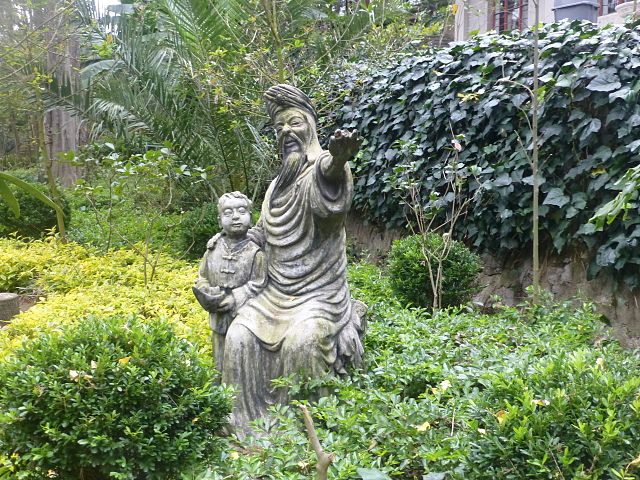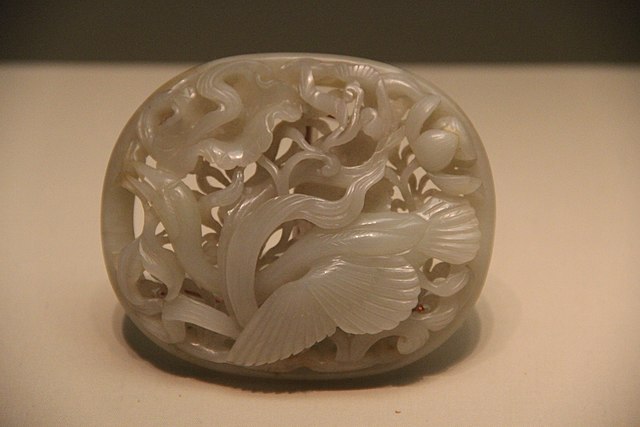Semu is the name of a caste established by the Yuan dynasty. The 31 Semu categories referred to people who came from Central and West Asia. They had come to serve the Yuan dynasty by enfranchising under the dominant Mongol caste. The Semu were not a self-defined and homogeneous ethnic group per se, but one of the four castes of the Yuan dynasty: the Mongols, Semu, the "Han" and the Southerners. Among the Semu were Buddhist Turpan Uyghurs, Tanguts and Tibetans; Nestorian Christian tribes like the Ongud; Alans; Muslim Central Asian Turkic peoples including the Khwarazmians and Karakhanids; West Asian Arab, Jewish, Christians and other minor groups who are from even farther west.
Ma Hajji, a Yuan Dynasty official in Yunnan (a descendant of Sayyid Ajjal Shams al-Din Omar), and his young son Ma He, future admiral Zheng He, as imagined by a modern Kunyang sculptor.
The Yuan dynasty, officially the Great Yuan, was a Mongol-led imperial dynasty of China and a successor state to the Mongol Empire after its division. It was established by Kublai, the fifth khagan-emperor of the Mongol Empire from the Borjigin clan, and lasted from 1271 to 1368. In Chinese history, the Yuan dynasty followed the Song dynasty and preceded the Ming dynasty.
Kublai Khan, founder of the Yuan dynasty
The Bailin Temple Pagoda of Zhaoxian County, Hebei Province, built in 1330 during the Yuan dynasty
A Yuan dynasty jade swan
A Yuan dynasty blue-and-white porcelain dish with fish and flowing water design, mid-14th century, Freer Gallery of Art





